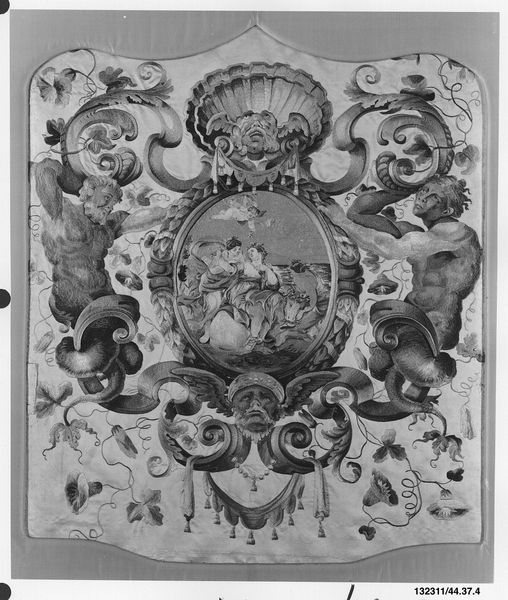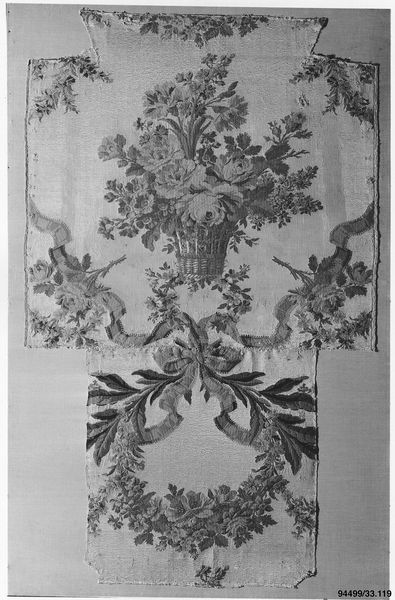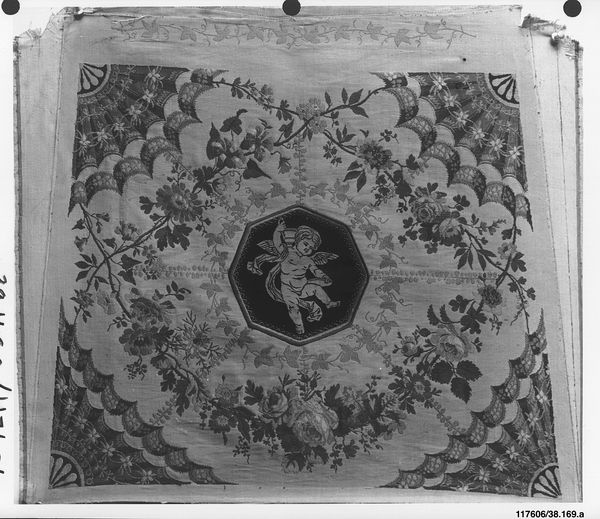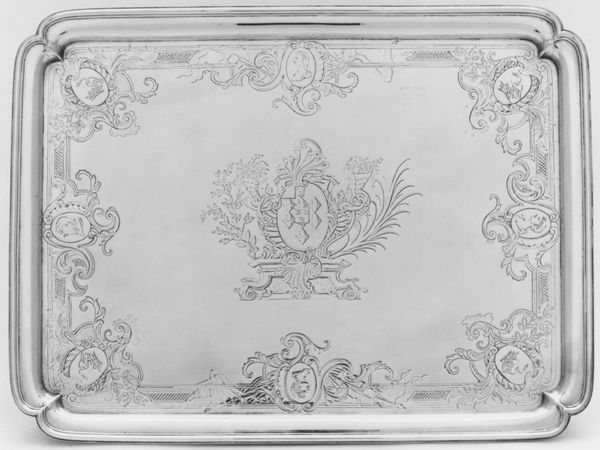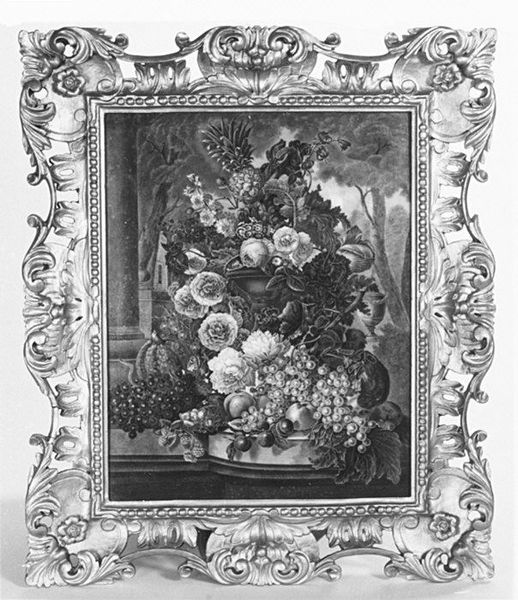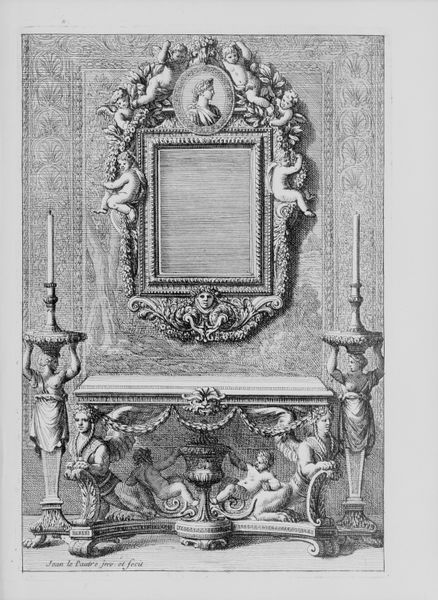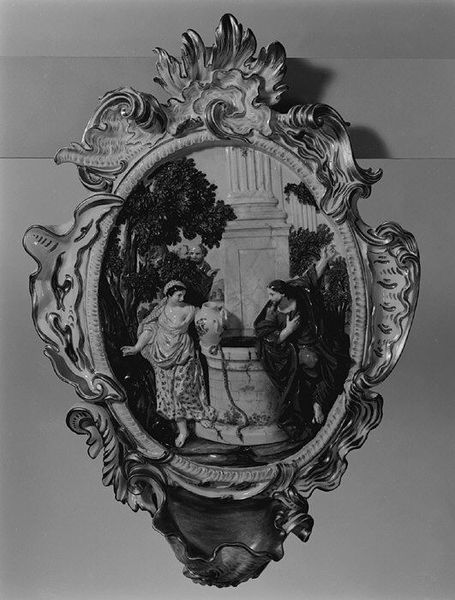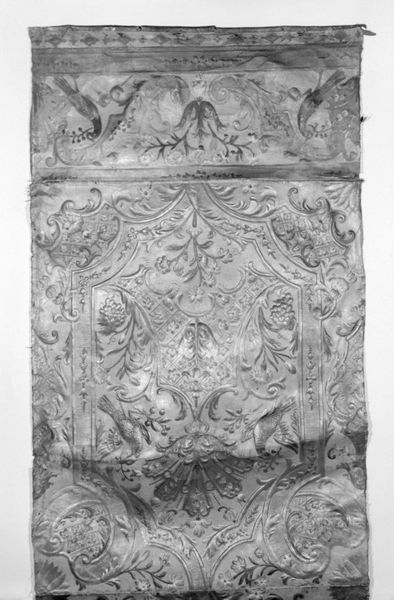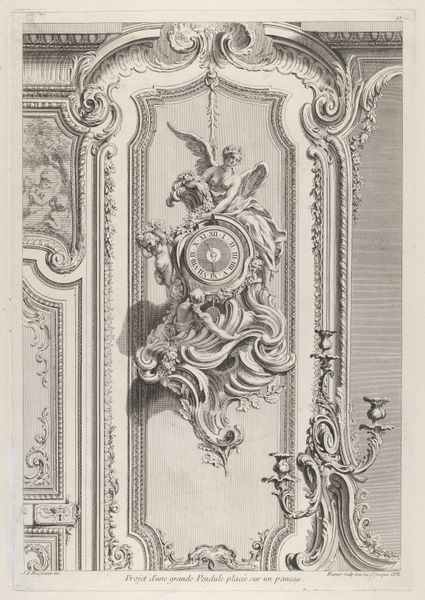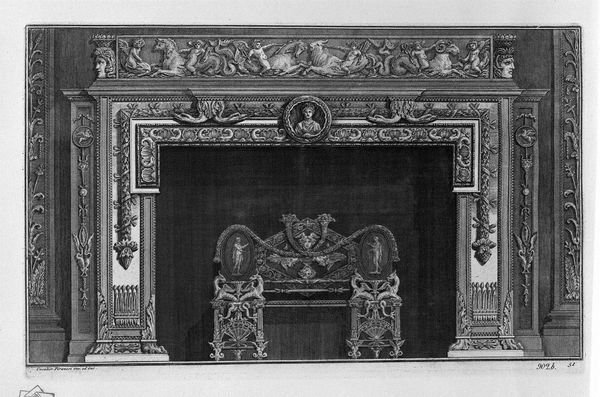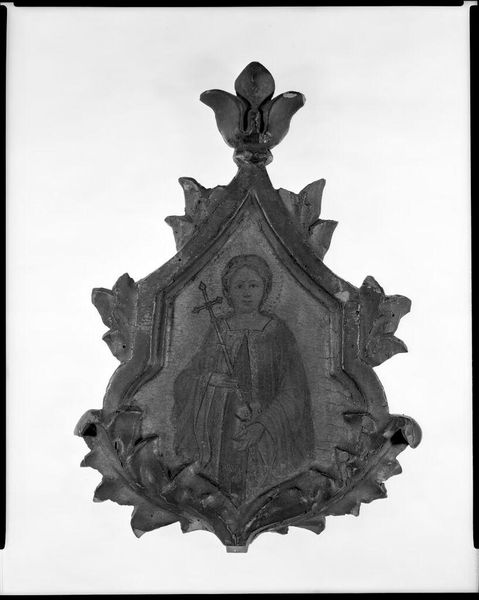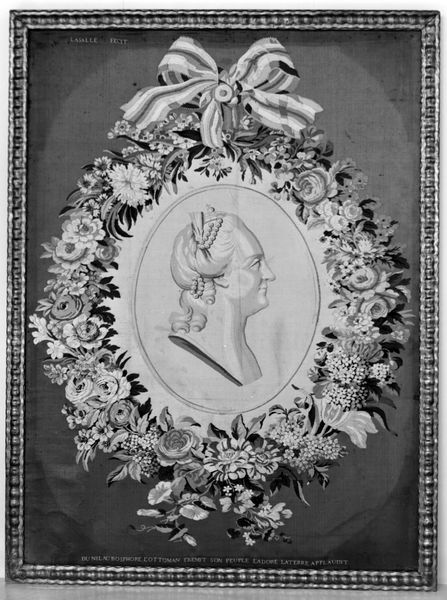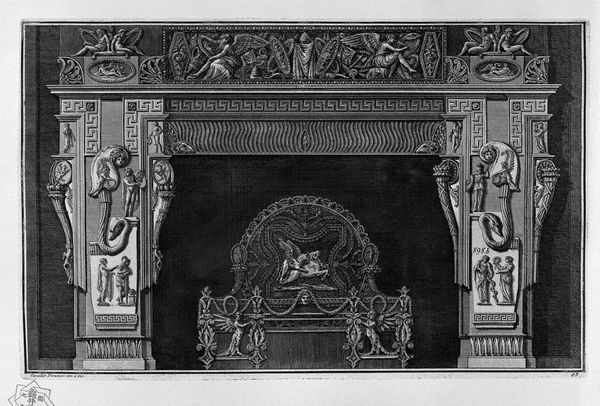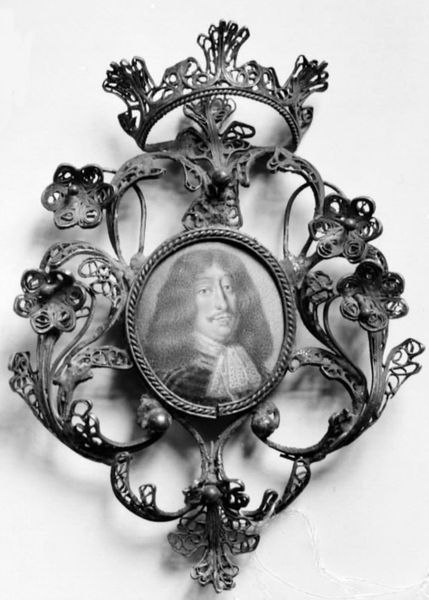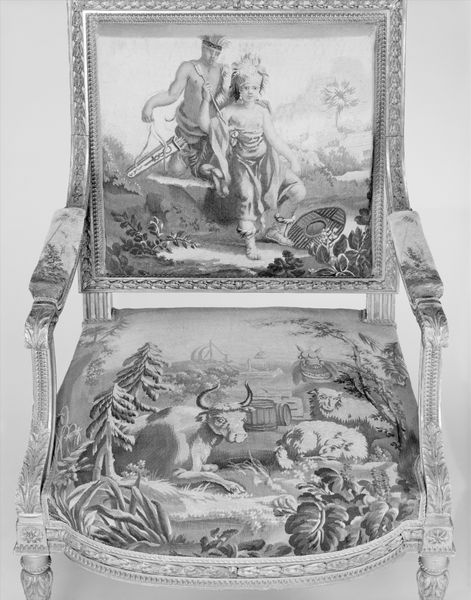
weaving, textile, sculpture
#
allegory
#
baroque
#
sculpture
#
weaving
#
textile
#
figuration
#
sculpture
#
history-painting
#
decorative-art
#
pencil art
Dimensions: L. 64 1/2 x W. 50 inches (163.8 x 127 cm)
Copyright: Public Domain
Editor: This Upholstery Panel, woven sometime between 1700 and 1715, is credited to Daniel Marot the Elder. It's incredibly detailed for a textile; it almost looks like a grayscale painting. What's your take on this piece, considering the period it comes from? Curator: Considering the Baroque style and the social function of decorative arts in the 18th century, this panel highlights the convergence of art, power, and social identity. We see this kind of piece not merely as decoration, but as a visual statement, reinforcing the patron’s status through elaborate displays of wealth and cultural knowledge. Notice how the allegorical figures evoke classical learning. What does that tell us? Editor: That displaying such knowledge through artwork was a signal of being educated, part of the elite? A way to signal one's self as learned and powerful to those viewing it? Curator: Precisely! Moreover, tapestries and upholstery were not just beautiful; they also served practical purposes in large, drafty rooms. They insulated and amplified the sensory experience of power through opulent visual textures. In that respect, we see here how a particular socio-economic context can really define both what something is and its public role. How do you think its meaning shifts when we display it in a museum today? Editor: I imagine it goes from signaling wealth to representing it, so its value becomes historical more than directly related to status. Fascinating to consider the changing role of an object just by changing its context. Curator: Exactly! Today, its aesthetic and historical significance is accessible to a broader audience, while also serving as a case study in social history. Seeing it allows us to critically engage with questions of access, privilege, and cultural heritage.
Comments
No comments
Be the first to comment and join the conversation on the ultimate creative platform.
